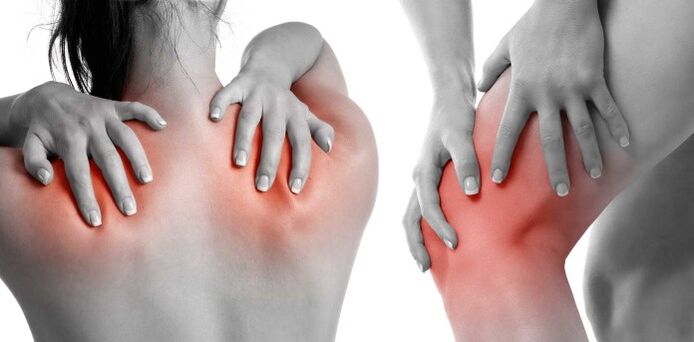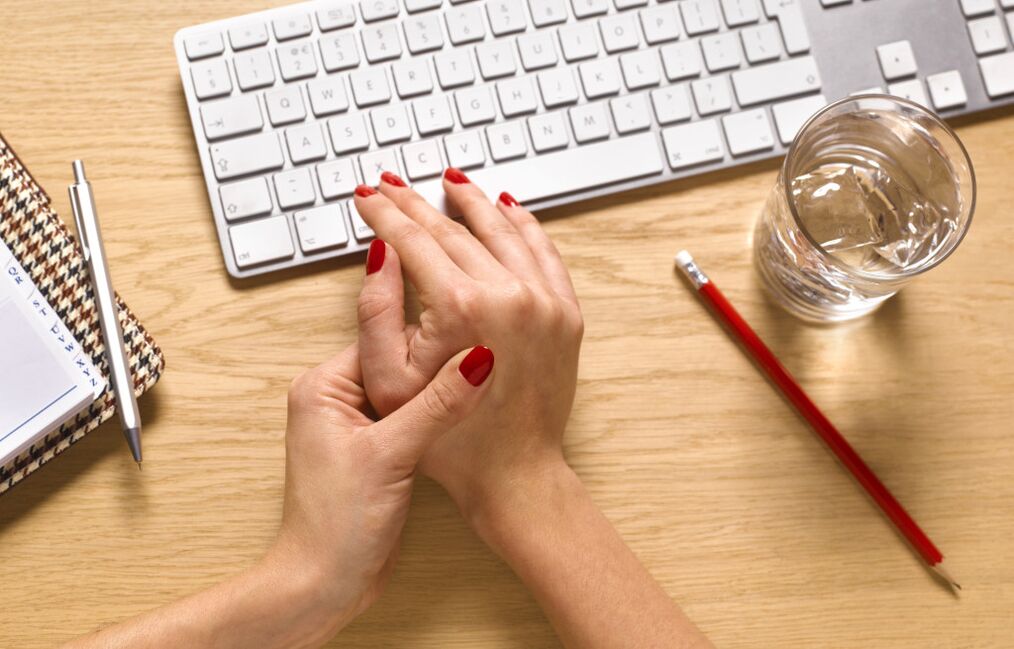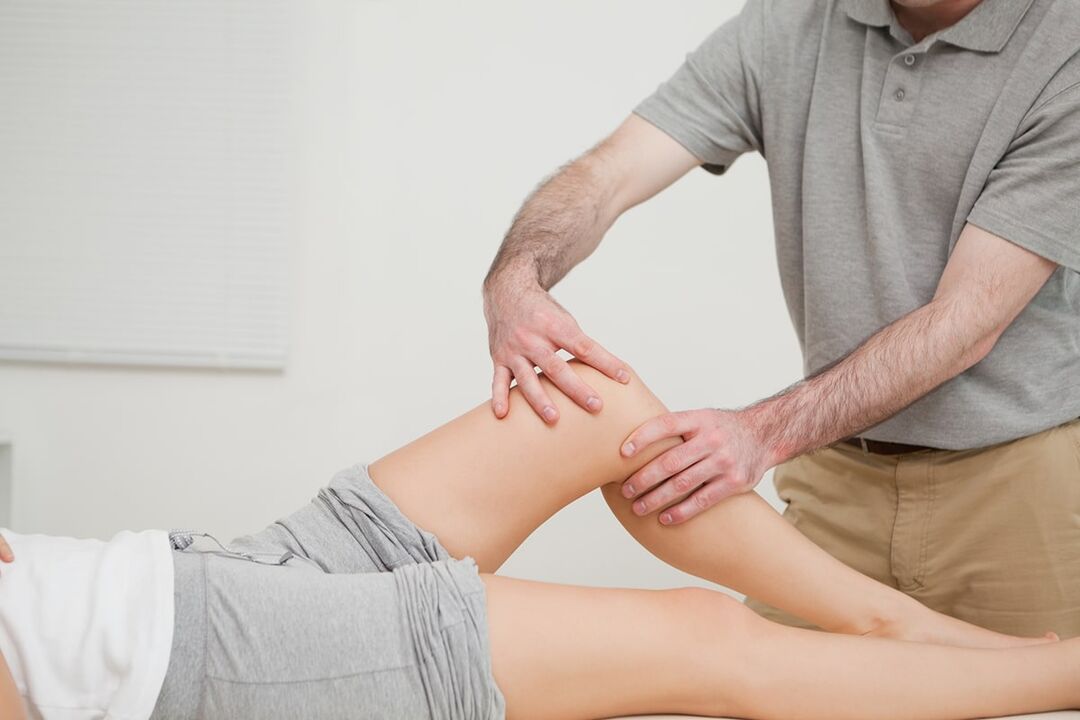One of the most frequent reasons why people seek medical help are back pain and joints. Probably there are no people who have not been affected by these problems, and with age, unfortunately, the pain in the back and joints remind of themselves more and more persistently.
One of the most common diseases of the musculoskeletal system is arthrosis. It is about him that we will tell you in this article.
Arthrosis is a chronic joint disease of a degenerative-dystrophic nature, in which the joint cartilage, the joint capsule, gradually occurs. Bone tissue, which is directly under the porous cartilage, unevenly thickens, compensating for the loads, that is, the joint deformation occurs.
In addition, this disease is called: osteoarthrosis deforming arthrosis or arthritis, since the initially occurring damage to the tissue of cartilage leads to the inflammatory process in the joint.
What is the difference between arthritis from arthrosis

These two diseases are often confused among themselves due to the harmony of the names and due to the fact that both arthrosis and arthritis affect the joints. Meanwhile, these are different diseases and, which is very important, they are treated in different ways.
Arthrosis most often develops in old age (from 45 years and older), this is gradually taking place of age -related joint deformation.
Arthritis, on the contrary, more often begins at a young age (up to 40 years). Of course, there are exceptions, for example, after a cold or flu in an elderly person, arthritis can develop, or vice versa-in a young seriously an athletes against the background of physical overload, arthrosis of the knee joints occurs.
2% of the world's population suffers from various arthritis, and often young people. About 10% of our planet suffers from arthrosis, and if young arthrosis affects relatively rarely, then in old age the number of patients with arthrosis increases repeatedly. In the age group of 50-year-olds, every third person has these or other phenomena, and every second one or another is among 70-year-old arthrosis.
If only joints suffer from arthrosis, and the whole body is usually not involved in the pathological process, then with arthritis, on the contrary, the entire body is included in the inflammatory process, and only the "icberg" is inflammation with arthritis, since the internal organs almost always suffer (most often the heart, liver, kidneys), therefore, if adequate treatment is not carried out, complications of some arthritis may be carried outPose a serious threat to the patient's life.
With arthritis, inflammation in the joints is usually manifested by their redness, swelling, severe pains that do not subside at rest, and sometimes on the contrary intensify at night.
With arthrosis, the pain manifests itself mainly only when moving or physical exertion, while it may not be very strong (especially at the beginning of the disease). That is why people often start the disease. In the second stage, the pain is manifested already at a slight load, and in the third - even at rest. However, unlike arthritis, it can subside if the patient manages to take a convenient position.
With arthrosis, a rough dry crunch appears in the area of the affected joint, which occurs as a result of the destruction of the cartilaginous layer and friction of the bones. The further the destruction of the joint progresses, the stronger the crunch becomes.
With arthrosis, the amplitude of movement in the affected joint decreases, while arthritis is characterized by stiffness in the entire body or in the joint.
Inflammation of the joints in arthritis is most often due to infection or failure in the activity of the immune system (autoimmune process), less often arthritis indicates a general metabolic disorder.
Types of arthrosis
Arthrosis is a whole group of joint diseases that have different origin, but close development mechanisms. Most often, arthrosis affects large joints.
In terms of localization, several types of arthrosis are distinguished: gonartrosis - deforming osteoarthrosis of the knee joint, coxarthrosis - deforming osteoarthrosis of the hip joint, deforming the fraud of the shoulder joint is the most severe types of arthrosis.
Arthrosis of small joints is less common, usually older people suffer from them.
Often occurs arthrosis of the joints of the foot.
Spondylarthrosis - arthrosis of the joints of the spine (often encountered disease of the spine).
Symptoms of arthrosis
The main clinical symptoms of arthrosis are pain in the joint and a decrease in its mobility. Specific symptoms and their severity are determined by the stage of arthrosis and depend on the degree of destructive changes in the joint.
The causes of arthrosis
- Joints and bones injuries, microtraumatization of the joint tissue with excessive load on production or during sports, with obesity, mechanical damage to the joints during surgery and even with violation of posture or flat feet.
- Genetic disorders in the cartilage tissue of the joint, which lead to its accelerated destruction. This can be hereditary congenital defects of the musculoskeletal system: dysplasia, hypermobile of the joint, flat feet or other defects that are the cause of trauma of certain sections of the cartilage tissue of the joints and, as a result, lead to the development of arthrosis. For example: deforming osteoarthrosis of the interfalancing joints of the upper extremities is found, as a rule, in women and is inherited by the maternal line.
- Autoimmune diseases (psoriasis, gout, rheumatoid arthrosis).
- Other joint diseases (acute and chronic arthritis, bursitis, synovitis and other inflammatory joint diseases of various etiologies can lead to the development of osteoarthrosis).
- Vascular diseases.
- Diseases causing circulatory disorders in the periarticular tissues lead to dystrophic changes in the joint (varicose veins that regulates endarteritis, atherosclerosis of the vessels of the lower extremities and even such a normal hypodynamia for all of us).
- Endocrine diseases, metabolic disorders, deficiency of minerals, trace elements and vitamins causes changes in the composition of cartilage, joint fluid and bone tissue, which gradually leads to a violation of restoration processes and destruction of the joint.
How arthrosis develops

Another arthrosis associated with the aging of the body develops according to the following scheme. The process begins with circulatory disorders in the capillaries of the periosteum, as a result of which the nutrition of cartilage is disturbed. Gradually, the cartilage is thinner, loses its elasticity, cracks appear on it, the smoothness of the articular surfaces is lost, the amount of synovial fluid is reduced, which ensures sliding of the articular surfaces. As a result, pain and crunch appear when moving. Over time, the width of the joint slit decreases, osteophytes (bone spikes) are formed on the articular surfaces. Ultimately, the joint is deformed, the amplitude of its movements is reduced.
The development of this form of arthrosis occurs gradually, over the course of many years.
Other forms of arthrosis can develop according to a different mechanism (for example, post -traumatic arthrosis), but pathological changes in the joint will be similar.
Treatment of arthrosis
If you were diagnosed with arthrosis or osteoarthritis, you have a difficult treatment, but it is very important not to give up and not lose hope for a successful outcome.
In the case of any pain in the joints, impaired their function and other symptoms, you must consult a doctor. A specialist who is engaged in joint problems is a rheumatologist.
The main tasks of treatment are pain relief, the restoration of the affected joint structures (mainly cartilage) and the motor function of the joint. Success can only be achieved with a timely beginning of therapy. If you begin to treat arthrosis at an early stage, it is possible not only to suspend the development of the pathological process, but even partially restore the destroyed cartilage.
If the cause of the disease is known, you must try to eliminate it. If there is excess body weight, you must lose weight. In case of a violation of metabolism or hormonal background, you should direct forces to its normalization. In the event of a problem due to workers or sports loads-to change the sphere of activity, not to abuse sports.
The selection of drugs is the task of a doctor, you should not prescribe them yourself. Most often, combinations of the following groups of drugs are used for treatment:
- Analgesics (analgesic);
- Hormonal and non -steroidal anti -inflammatory drugs;
- Protectors (funds feed and restoring cartilage).
Getting rid of excess weight is the most important link in the therapy of arthrosis, because excess body weight increases the load on sore joints not only during movement, but also at rest. In patients who were able to lose weight, the disease progresses much slower than those who did not succeed. However, the medal has another side. If you put the disease on its own, weight loss is unlikely to be possible at all. When the joint hurts a lot, the performance of even the simplest exercises turns into torture.
Therefore, you need to act in several directions at once: try to reduce weight, treat the underlying disease and change your lifestyle.
Protectors
All patients with arthrosis are prescribed funds from a group of treads that inhibit the destruction of cartilage and even restore it. The composition of such drugs includes substances of glucosamine and sulfate (or their combination) that help moisturize cartilage, increase its elasticity, improve nutrition, and activate recovery processes in it. Such funds also have an analgesic effect, but this effect develops some time after the start of admission.
Treatment of arthrosis folk remedies
Since ancient times, folk remedies have been successfully used in the treatment of arthrosis and arthritis. Their main task is the normalization of metabolism, stimulating regenerative processes of cartilage, cleaning from toxins, eliminating inflammatory processes in the joints and periastal tissues, eliminating pain and edema in them. These means include:
Sables - relieves inflammation in the joint, reduces pain and swelling in the joints.
Dandelion root - improves joint elasticity.
Iva bark contains lignin, tannins, salicyide glycoside, ascorbic acid, anthocyanis, pectins.
Field horsetail - helps with the restoration of cartilage tissue of the joints.
Birch leaves - as tinctures remove urinary acid from the kidneys and joints, and with external use are used in the steaming and massage in the bath.
Timyan - contributes to the synthesis of collagen.
Forest strawberries - reduces swelling of the tissues around the joints.

A series - has an anti -inflammatory effect, baths with a series improve blood circulation in peri -human tissues.
Ointments from juniper berries, nettle leaves and cow oil to relieve joint pain.
Ointment made of crushed root of horseradish and petroleum jelly - relieves pain and reduces the inflammatory process in the joint.
Jerusalem artichoke - for the preparation of a bath to relieve inflammation in the joint and reduce pain.
Burders - improve metabolism and remove salts from the joints.
Herbal teas from thyme, lingonberries, rosehips, oregano and mint - to remove toxins and toxins from the body.
Tincture of a golden mustache for oral administration
Cut 10 - 15 joints, grind them along and down, pour 0. 5 liters of vodka and insist in a dark place for two weeks.
Apply one tablespoon 3 times a day, an hour before meals. You can’t drink or jam anything. The course of treatment is 7 - 10 days.
The same infusion can be used as a compress on a sore joint.
Golden mustache
This ointment is prepared on the basis of petroleum jelly, baby cream or interior fat. Grind the leaves and stems of the golden mustache, squeeze the juice from the resulting gruel and mix with cream or fat in a ratio of 1: 3. Keep refrigerated. It is used for rubbing sore joints for arthrosis and arthritis.
Honey with aspirin from joint pain
Grind 10 tablets of acetylsalicylic acid (aspirin) into powder and mix thoroughly from 200 g of honey (preferably liquid). Put the mixture for 10 days in a dark warm place, mix periodically. Lubricate sore joints with the resulting tool, then cover with polyethylene and wrap it with a woolen scarf. Leave the compress all night. Do procedures until relief comes.
Under the influence of this tool, light redness and burning sensation may appear, but this effect passes over time. This recipe is not suitable for people with allergies to beekeeping products or aspirin.














































